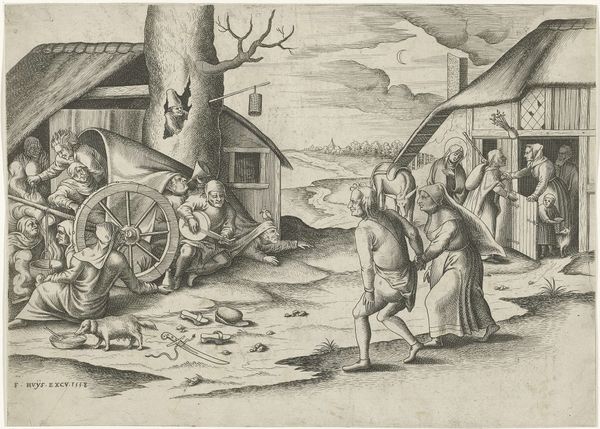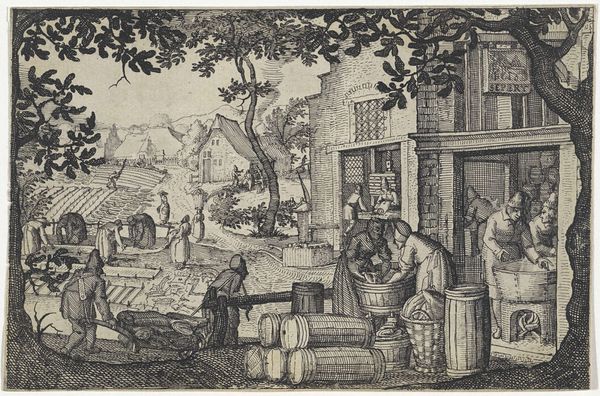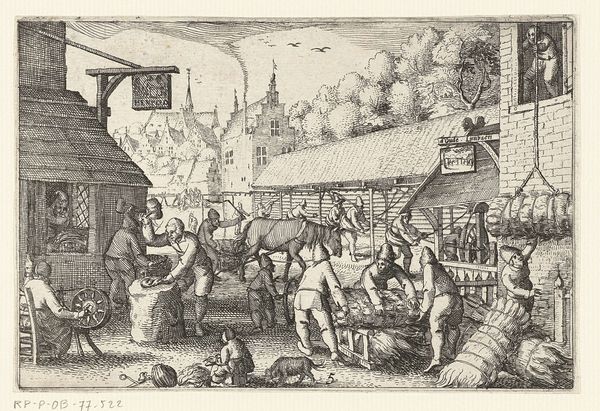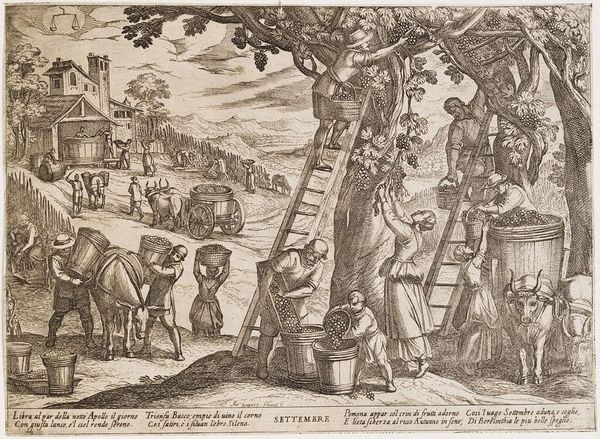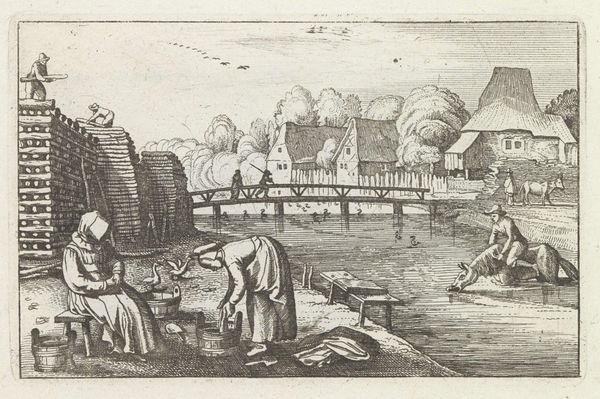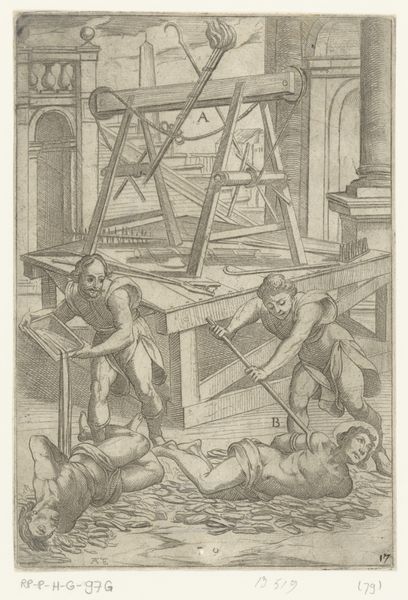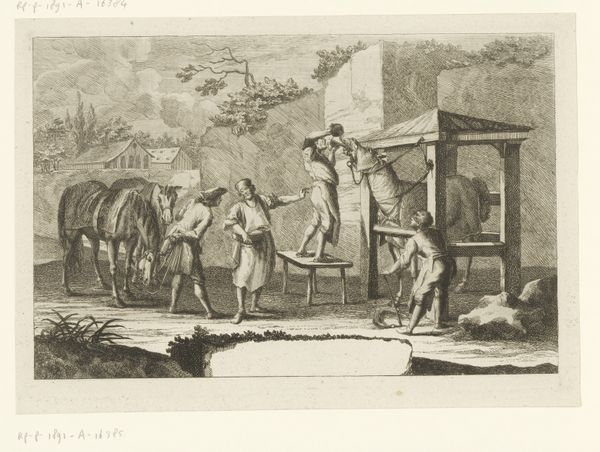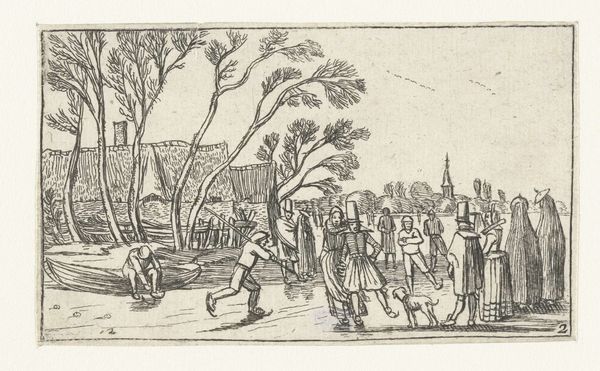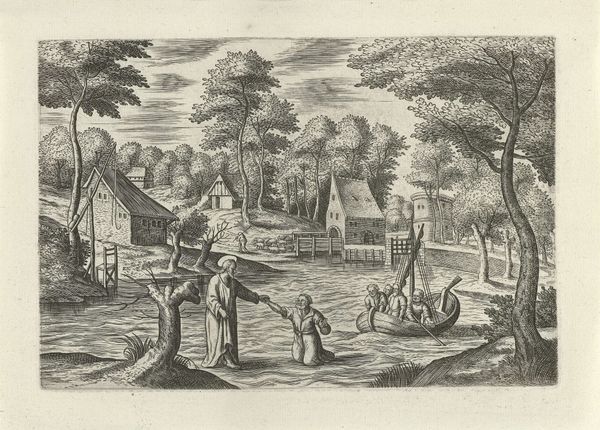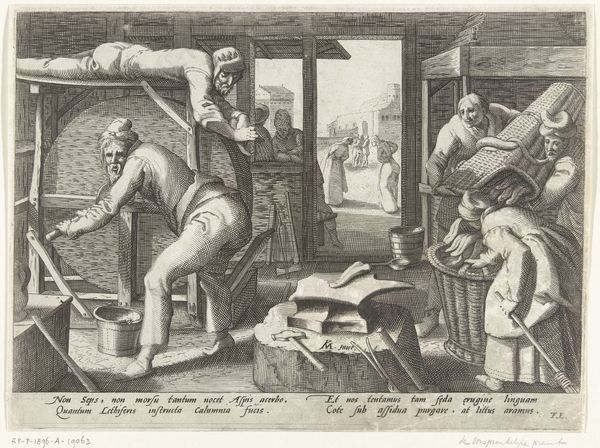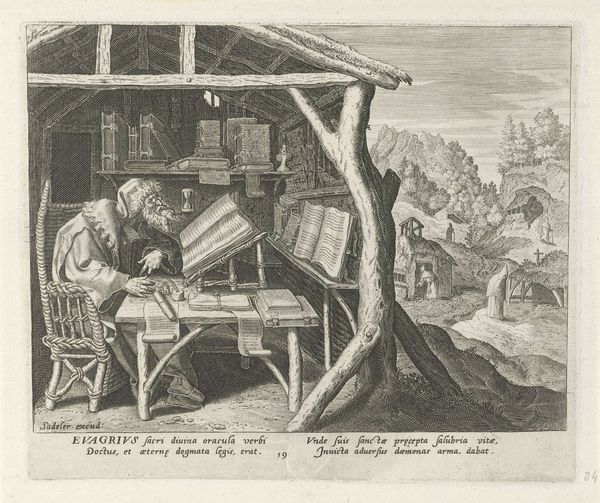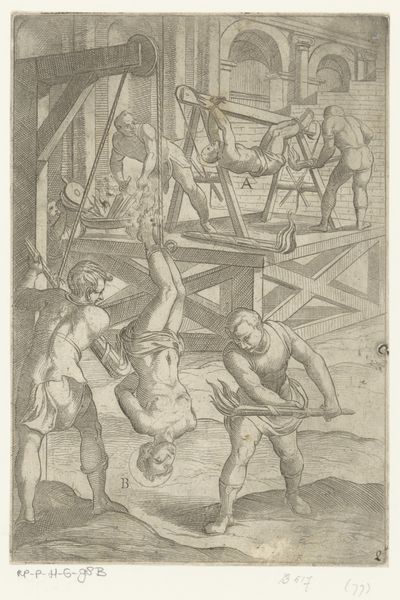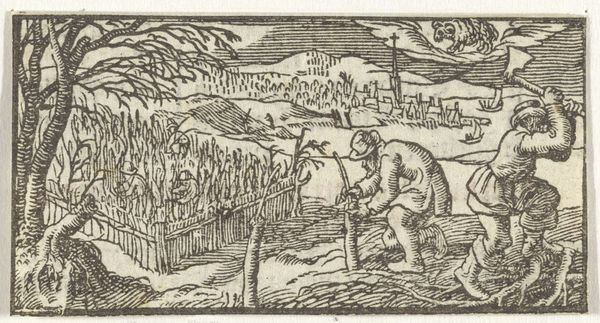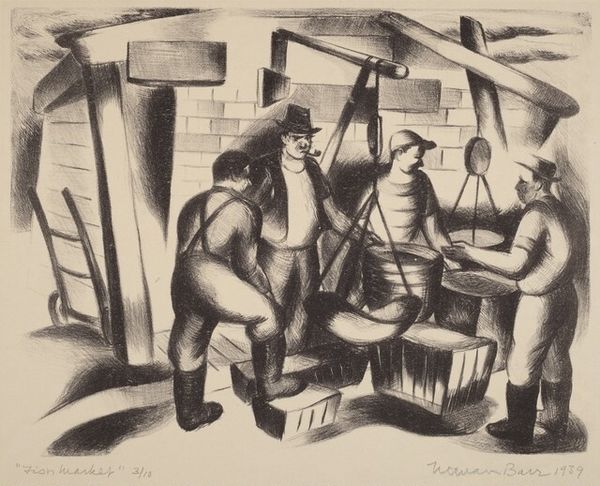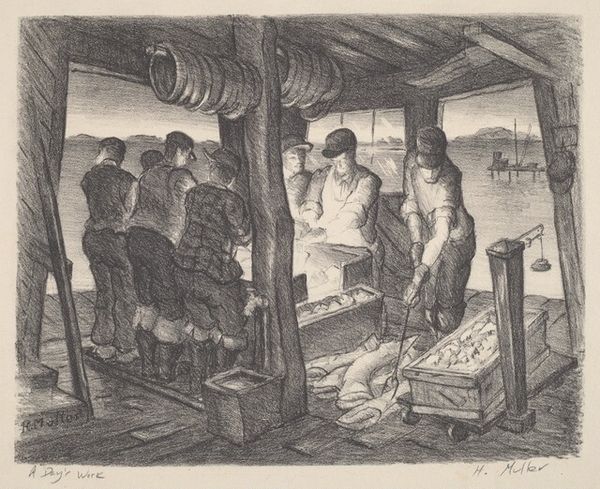
drawing, print, graphite
#
pencil drawn
#
drawing
# print
#
pencil sketch
#
landscape
#
pencil drawing
#
pen-ink sketch
#
graphite
#
genre-painting
#
realism
Dimensions: image: 406 x 292 mm paper: 483 x 330 mm
Copyright: National Gallery of Art: CC0 1.0
Curator: This print is titled "Corn Huskers" by Florence Elliott White McClung, created around 1930. It seems to be a graphite drawing, though some sources suggest it might also exist as a print. Editor: Immediately, there’s a feeling of stoicism that emanates from this image. The subdued tones of the graphite create a muted palette, emphasizing the intricate mechanics of the machine versus the figures in the composition. It’s somber, in a way. Curator: It does reflect the times. During the Depression, there was a widespread fascination, almost an idealization, of agrarian life—the noble farmer struggling to feed the nation. The corn husker machine becomes a powerful symbol here, almost deified in its size and complexity. Consider how labor-saving technologies become a complex element within genre paintings depicting labor. Editor: Precisely! The machine is framed quite deliberately—those converging lines draw your eyes immediately. The contrast in texture too, between the cold, hard geometry of the husker and the organic forms of the trees, amplifies its importance. Yet the human figures almost seem secondary, part of the industrial landscape themselves. Their positioning directs your eye in the formal semiotic tradition. Curator: Absolutely. And observe their activities: the standing figure feeds the husker, while the seated woman seems to be mending. The whole drawing resonates with the cultural symbolism of hard work, cooperation, and the endurance of rural communities through technological change. Mending has its own deeply symbolic role—often related to familial love in rural contexts. Editor: It does bring into question the romanticized notions of progress versus a genuine look at work at the time. There is a tension between efficiency, symbolised by the machine, and what it means to do such strenuous labor. The texture is remarkable. The way the shadows have been articulated adds depth and dimension; perhaps there's an acknowledgement, as a consequence, to its effect on life. Curator: It reminds us that images carry collective dreams and anxieties. In looking at it more closely now, I think there are complicated things to say here about how technology affects rural lives and communities, and about that ambivalence. Editor: A sober depiction of a time facing incredible transformation, articulated beautifully with grayscale tones. I shall hold on to the effect of lines and contrast!
Comments
No comments
Be the first to comment and join the conversation on the ultimate creative platform.
